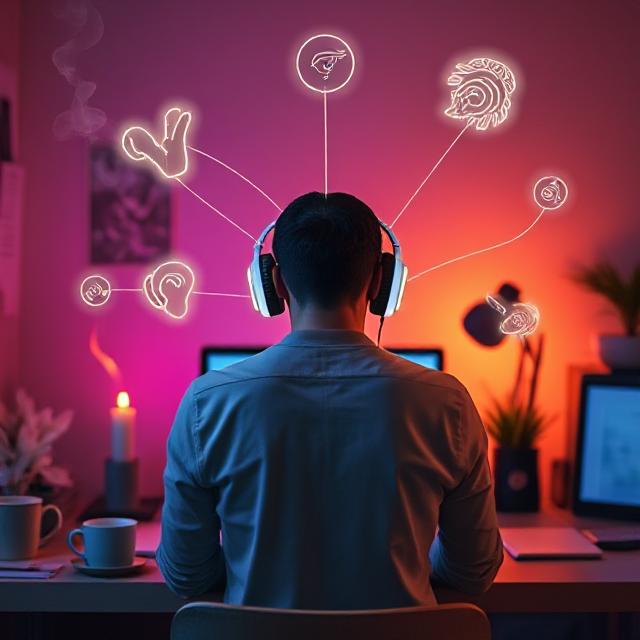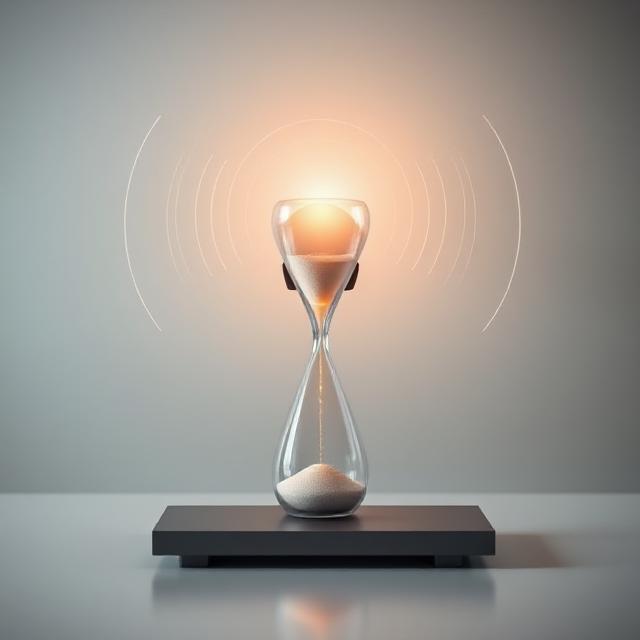
Table of Contents
Creating Anchor Cues to Enter Flow Fast
TL;DR
Your brain is a pattern-recognition machine. By repeating specific sensory cues—like music, scent, or movement—before you begin focused work, you train your nervous system to enter flow state faster. These are called anchor cues, and they help you build a ritual gateway into deep focus.
I. The Science Behind Flow Priming
Flow states arise when your brain enters a cocktail of neurochemical and brainwave shifts:
- Dopamine and norepinephrine spike to fuel attention
- Alpha and theta waves harmonize to reduce inner chatter
- The prefrontal cortex downregulates, reducing ego and time perception
This shift is delicate. External interruptions, uncertainty, or mental resistance can break the entrance into flow. That’s where anchor cues come in.
Anchor cues serve as reliable environmental signals that tell your brain:
“We’re about to enter focus mode now. Let’s go.”
II. What Are Anchor Cues?
An anchor cue is any consistent, repeatable sensory input you associate with beginning a task—especially deep, creative, or mentally demanding work.
Examples:
- A specific song or ambient sound you only use for deep work
- A scented candle or essential oil (like peppermint or rosemary)
- A cup of matcha or coffee prepared in a ritualized way
- A certain desk setup, lighting pattern, or work uniform
- A sequence of body movements (like 10 push-ups, 1 deep breath, and sit)
- A spoken phrase or mantra said aloud
The key is repetition: each time you pair the cue with a successful entry into flow, your brain learns to associate it with focused immersion.
III. Why Cues Work: Hebbian Learning and Pattern Locking
“Neurons that fire together wire together.” – Hebb’s Law
Every time you sit at your desk, put on lo-fi beats, and sip your coffee before writing, you’re embedding a neural expectation: this is when we focus. That expectancy begins to:
- Reduce mental friction
- Cue dopamine release in advance
- Increase likelihood of task engagement
- Shorten the delay between starting and entering flow
The more precise and repeated the cue, the stronger the pattern lock.
IV. How to Create Your Own Flow Anchors
Step 1: Choose a Focus Task to Anchor
Pick one type of deep work you want to consistently enter flow for:
- Writing
- Coding
- Reading dense material
- Designing
- Practicing music
Don’t generalize the anchor to everything—tie it to one domain first.
Step 2: Select 2–3 Multi-Sensory Cues
Choose sensory elements that can be repeated exactly:
| Sense | Cue Examples |
|---|---|
| Sound | Same playlist, ambient noise, binaural beats |
| Smell | Peppermint oil, cedar incense, beeswax candle |
| Taste | Dark coffee, mint tea, cacao nibs |
| Sight | Clean desk, specific desk lamp, visual timer |
| Touch | Weighted blanket on lap, specific hoodie, textured coaster |
Combine 2–3 of these for a compound trigger. Over time, this sensory combination becomes tightly associated with your flow task.
Step 3: Ritualize the Entry Sequence
Build a 2–5 minute startup ritual before work:
- Close all distractions
- Light your candle, brew your drink
- Sit, stretch once, deep breath
- Press play on your flow playlist
- Open your tool or workspace
Each repetition strengthens the cue. Over weeks, your brain will start prepping for flow before the task begins.
Step 4: Never Use the Cue for Anything Else
Here’s the golden rule: Don’t mix your anchors.
If you use the same lo-fi playlist for browsing YouTube, or the same scent for watching TV, you dilute the flow association.
Let your flow cues remain sacred—used only for deep work. This keeps their signal clean and your brain’s response sharp.
V. Advanced Techniques: Building Layered Cues
Once your basic anchor system is working, try these enhancements:
1. Temporal Anchoring
Use the same time of day for deep work to sync with your circadian rhythm (e.g. 9–11 a.m.).
2. Spatial Anchoring
Use the same location or zone—even if it’s just one chair, one light, one table—to condition spatial association.
3. Motion Anchoring
Some people enter flow faster after a movement ritual:
- 5 jumping jacks
- A sun salutation
- Walking to a specific spot and back
Movement ties the body to the act of “showing up.”
4. Auditory Anchoring
Try sonic conditioning with short audio clips (e.g. 30 seconds of Tibetan bells) that begin each deep work block.
VI. Common Pitfalls to Avoid
- Changing your cues too often → no pattern lock
- Using cues for passive tasks → association breaks
- Starting with too many cues → overwhelm
- Not honoring the ritual → flow becomes erratic
Keep it simple, sacred, and repeatable.
VII. Real Flow Anchoring Examples
The Writer
- Cue: Glass of mint tea + candle + quiet jazz playlist
- Ritual: Lights dimmed, candle lit, 1 breath, start Scrivener
- Time: Every morning 8–10 a.m.
The Developer
- Cue: Noise-canceling headphones + coding hoodie
- Ritual: 3 push-ups, timer to 90 mins, open VSCode
- Never codes outside this setup
The Artist
- Cue: Standing desk + color-changing light + no shoes
- Ritual: 1 minute of dance before pen to tablet
- Keeps lights + socks consistent every session
VIII. Supplements and Hacks to Boost Cue Sensitivity
| Boost Type | Tools |
|---|---|
| Dopaminergic Focus | L-Tyrosine, Alpha-GPC, Rhodiola Rosea |
| Brainwave Modulation | L-Theanine (alpha), ashwagandha (theta) |
| Olfactory Memory Boost | Rosemary essential oil (proven for recall) |
| Pre-Flow Alertness | Cordyceps, caffeine + theanine |
Use these sparingly and stack with your anchor cues for a more neurochemically primed flow entry.
Final Thoughts: Make Flow Predictable, Not Accidental
Flow isn’t magic—it’s a trainable state.
By ritualizing your entry, anchoring your environment, and keeping your cues consistent, you give your brain a predictable signal:
“It’s time to go deep.”
Over time, your anchor cues won’t just help you work better. They’ll become a doorway into your best ideas, most meaningful creations, and deepest sense of mental presence.

